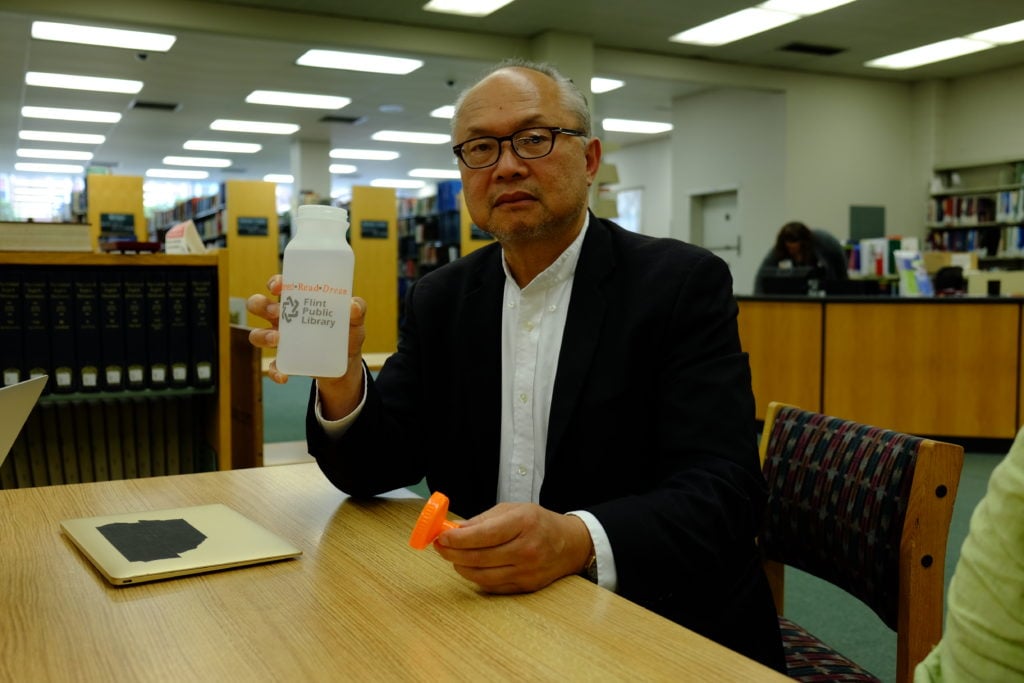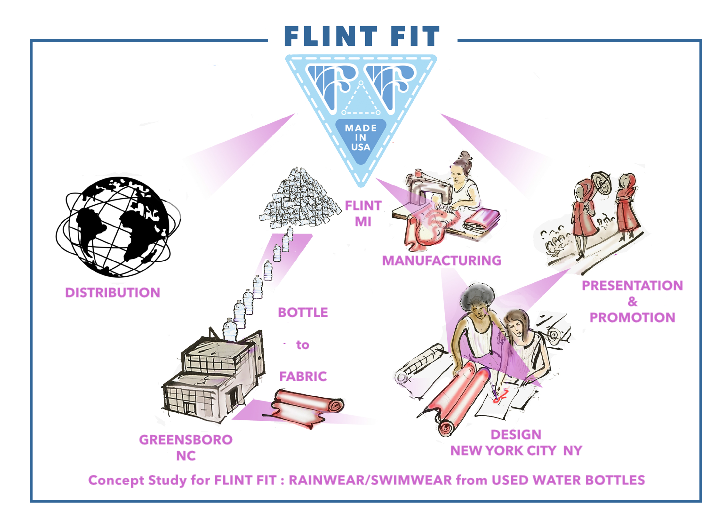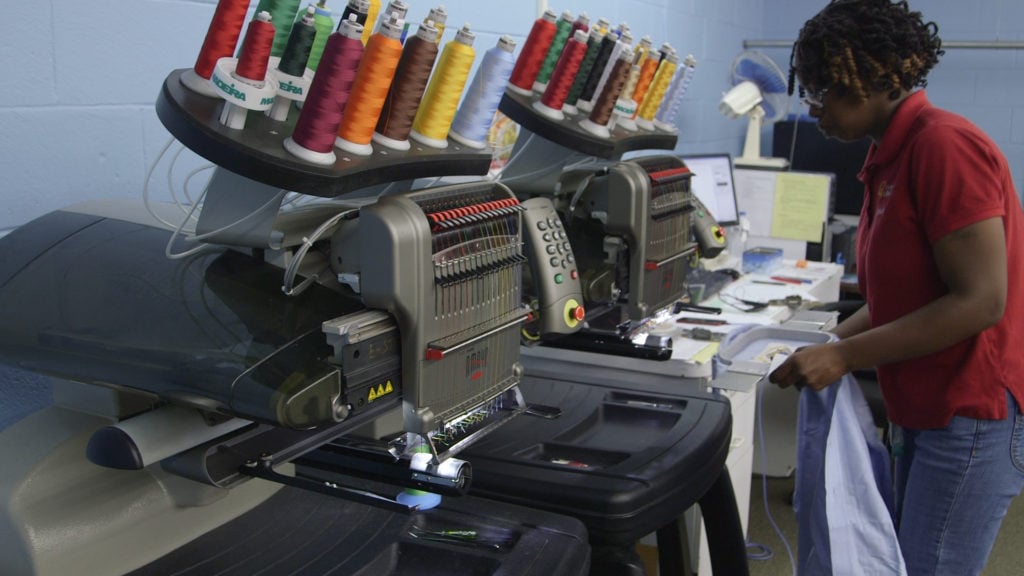Art World
Can an Art-Fashion Collaboration Really Help the People of Flint, Michigan? Artist Mel Chin Is Betting on It
The artist has enlisted fashion designer Tracy Reese for a multifaceted project designed to help city residents.

The artist has enlisted fashion designer Tracy Reese for a multifaceted project designed to help city residents.

If you thought art-fashion collaborations were only meant for the catwalk, you probably haven’t met Mel Chin. For his latest enterprise, the social practice artist has enlisted the help of rising fashion designer Tracy Reese for a public project that combines art, clothing, and millions of plastic bottles to help the people of Flint, Michigan.
More than three years after lead was discovered seeping into the water pipes in Flint, residents are still struggling with the fallout from the contamination—even as the issue has been edged out of headlines. To address the ongoing crisis, Chin invited Reese to collaborate with him on Flint Fit. The multi-pronged project utilizes Reese’s fashion chops to design a line of clothing using only fabric created from the discarded water bottles that once brought fresh water to Flint. A job component then employs disadvantaged residents to assemble the recycled garments.
“I was in Flint for another project,” Chin said in a recent interview at the Culture Lab Detroit conference, where he spoke about Flint Fit. In a flash of Columbo-worthy “just one more thing” inspiration, he realized that maybe the bottles by which clean water comes to the city could actually be used to serve Flint in a different way.
“I said, ‘Hey, what are you doing with those plastic bottles? Could you give them to me?'” he explained in an interview backstage at the conference, calling it a “by the way” moment.

Tracy Reese. Courtesy of No Longer Empty.
In a feat of logistics, Chin corraled companies and nonprofits throughout the eastern part of the US to make the Flint Fit happen. Flint residents are paid to collect the bottles, which will then go to Unifi, a company in Greensboro, North Carolina, which turns them into polyester fabric. From there, the material goes back to Flint, to the St. Luke New Life Center, where, according to its website, “survivors of abuse and poverty” get education and workplace training. They also get a minimum-wage job turning the material into clothing designs created by Reese, who is perhaps best known for designing the dress First Lady Michelle Obama wore at the 2012 Democratic National Convention.
“When Mel came to us and I got to look through his vast portfolio of work—wow!” Reese told artnet News. “I saw how he’s committed himself to raising issues that need to be talked about and corrected, ecologically and in terms of human rights. I couldn’t help but be drawn in and get on board.”

Chin’s diagram of the Flint Fit project. Courtesy No Longer Empty.
“He’s also a beautiful and prolific artist, someone I can learn from,” she added. Loads of her own research will, she hopes, lead to “something that speaks to the point and that is exciting to look at and fun to wear.”
Reese has taken a stand on political issues by advocating for women’s health organization Planned Parenthood and has worked to improve her own field by featuring more diverse models in terms of age, ethnicity, and body type.
Chin’s work in various mediums defies easy categorization. In one of his most offbeat projects, he and a number of collaborators intervened in the hit television series Melrose Place, altering scripts and creating artworks (later auctioned off for charity) that served as props, in a piece called In the Name of the Place (1995–1997). The artist’s award-winning hand-drawn animated video 9/11-9/11 (2007) drew parallels between the 2001 terrorist attacks in New York and Washington, DC, and the US-sponsored military overthrow of Chilean president Salvador Allende on the same day 28 years earlier.
But the project that most closely aligns with Flint Fit is Chin’s Operation Paydirt/Fundred Dollar Bill Project (ongoing since 2006), which aims to fight lead pollution, partly by using hand-drawn hundred-dollar bills by children as an awareness-raising hook.

A garment being sewn at the St. Luke N.E.W. (North End Women’s) Life Center in Flint, (2017). Courtesy of Ben Premeaux.
Flint Fit will be part of a multi-venue exhibition, “All Over the Place,” opening at various locations in New York in spring 2018 and headquartered at the Queens Museum. “Mel Chin’s work takes complex ideas and breaks them down into moving and direct artworks that invariably deliver something thought-provoking, and even action-provoking,” said Queens Museum director Laura Raicovich in an email to artnet News.
Co-organizing the show is No Longer Empty, a nonprofit that typically organizes site-specific exhibitions in temporarily disused spaces. Flint Fit is a new kind of undertaking for the organization, said co-founder and chief curator Manon Slome in an interview. “Our mission is to give artists opportunities outside the institutional framework,” she said, “but if I have to break my own rules to do a show with Mel, so be it.”
“This isn’t just a project that brings attention to the Flint water crisis,” Slome added. “What we’re doing is the prototype… Hopefully, [Flint Fit] will be handed over to the people of Flint.”
For Flint Fit to work, Chin says local buy-in is essential. The artist made a point of working with local organizations like Water You Fighting For. “I even told the mayor, ‘If you say no, it doesn’t fly,'” he said.
Seeing possibility where others might see only ruin, Chin believes that humanitarian crises in places like New Orleans, Flint, and Detroit offer invaluable opportunities to come together creatively and lift people up. “These are the places to let our humanity reemerge,” he says.